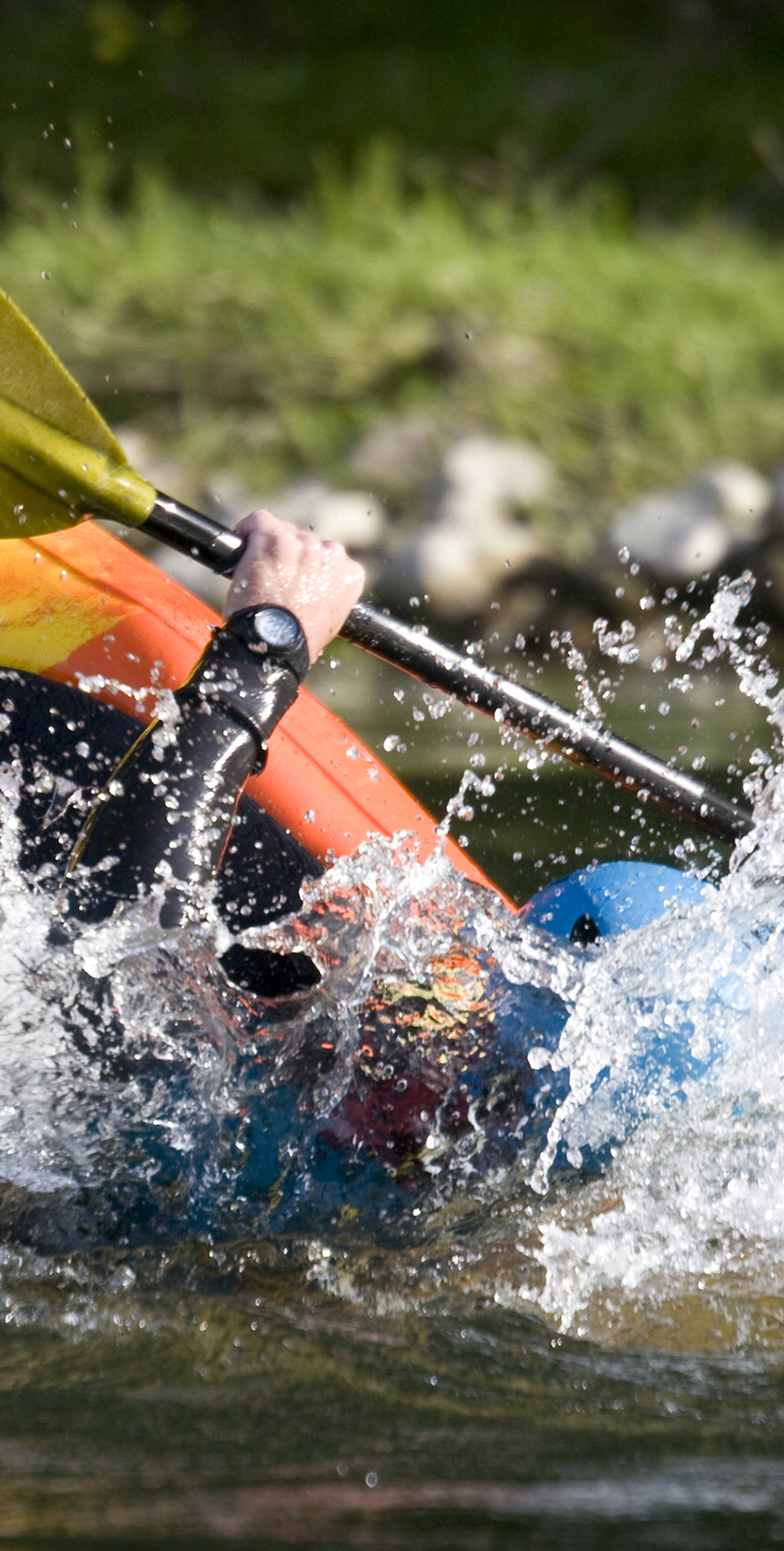Kayak Safety – Life Jackets
Having a life jacket, also known as a personal flotation device or PFD, is not only smart it’s required by the United States Coast Guard on all water crafts.Here are some basic rules to follow: A life jacket should fit snugly, yet be comfortable. Adult sized jackets are not suited for children, so be sure to size accordingly.Jackets should be tested yearly for buoyancy, and replaced if needed. Although you may not be required to wear a life jacket while paddling, you must have easy access to one.All life jackets must be Coast Guard approved in order to stay within regulations.
Kayak Safety – Re-Entry
Capsizing a kayak doesn’t have to be scary if you know what to do. When paddling a Sit-In kayak,we suggest you practice the following to be better prepared in the event of a real-time capsize.
Wet Exit:Exiting your sit-in kayak while the craft is upside down.Paddleeducation.com suggests pretending your kayak is a pair of pants and you are simply taking them off.
Tuck: When capsized the most important thing to do is tuck your body towards the front of the craft to keep your head from hitting any rocks or debris below the surface.
Eskimo Roll: When upside down, place your paddle parallel to the side of your kayak. With as much force as possible, swipe your paddle across the bow of the craft while twisting your torso.
• Remain calm. If you fail at the first attempt and can hold your breath long enough try to roll again. If needed use the wet exit maneuver and surface.
• Always practice with a buddy.
• Practice both the wet exit and Eskimo roll maneuvers many times over so if you you do capsize, a safe recovery will be second nature.
Kayak Safety – Supplies
- Kayak & Paddle
- PFD, Life Jacket
- Signaling device (whistle/waterproof VHF radio)
- GPS/Smart Phone
- First Aid kit
- Float plan (make 2 copies, 1 leave in your car, 1 with a friend)
- Dry bags
- Cooler if space provides
- Enough water for the day
- Energy snacks/bars
- Lunch / Food
- Sun screen
- Sun hat
- Sun glasses
- UV protective clothing
Kayak Safety – Float Plan
Whenever you get on the water,be it boating or kayaking, creating a Float Plan is a smart back up tool in the unlikely event something goes wrong. The United States Coast Guard offers a form that you can easily fill-in-the-blanks prior to any kayaking adventure. Leave this form with any friend or relative so they can provide authorities your plan if needed. At the very least, tell someone where you are going and when you expect to return. In an emergency situation, emotions can sometimes get the best of us. So having a hard copy float plan can provide valuable information to first responders and possibly save lives.
Get PDF